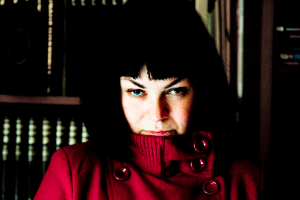Search
To search for an exact match, type the word or phrase you want in quotation marks.
A*DESK has been offering since 2002 contents about criticism and contemporary art. A*DESK has become consolidated thanks to all those who have believed in the project, all those who have followed us, debating, participating and collaborating. Many people have collaborated with A*DESK, and continue to do so. Their efforts, knowledge and belief in the project are what make it grow internationally. At A*DESK we have also generated work for over one hundred professionals in culture, from small collaborations with reviews and classes, to more prolonged and intense collaborations.
At A*DESK we believe in the need for free and universal access to culture and knowledge. We want to carry on being independent, remaining open to more ideas and opinions. If you believe in A*DESK, we need your backing to be able to continue. You can now participate in the project by supporting it. You can choose how much you want to contribute to the project.
You can decide how much you want to bring to the project.
Since time immemorial art has used the tactic of the fake to develop a large quantity of works of a different nature and appearance. Be it through the use of pseudonyms (Mark Twain, Robert Capa), the creation of heteronyms (Fernando Pessoa), the conformation of multiple identities (Luther Blissett), or the invention of fictitious identities (Nat Tate or Pavel Jerdanowitch), the art world has often found itself confronted with the appearance of works that in some way invite questions about their very foundations. With critical intent, charged with irony and a certain zeal for provocation, numerous artists have made works in which the ultimate aim is none other than to induce a debate about all the bureaucratic, social and economic processes (almost always slightly Kafkaesque) that as humans we assimilate by inertia, the many behavioural patterns and norms that we inevitably accept without ever questioning why.
The mysterious artist Nat Tate was nothing more than a creation of the writer William Boyd, the painter Pavel Jerdanowitch (leader and sole representative of the Desumbrationist movement) was an invention of the journalist Paul Jordan Smith, and Naromji a character invented by the publicist Jim Moran. They all erupted onto the art scene causing a great stir, with the questions about their possible inexistence casting the debate about the actual works to one side.
The project Sublevación de abril, selected in the open call of the Sala d’Art Jove in 2012, supposes the intrusion of a fictitious artist called Petia Cervera Krupova into a very specific context: that of emerging art in Barcelona. And does so, by not just any means, but by imitating the codes, the shared loci that invade such spaces, the modus operandi that predominate and that are often seen with favourable eyes by curators, agents and art critics. Beyond the desire to provoke that could be found in a superficial interpretation of the work, the real intention of Sublevación de Abril is none other than to elaborate a mechanism for reflexion through, by, for and about the art context in question. But why do certain characteristics, modus operandi or subjects repeat with such excessive frequency? Does the context favour the development of a certain type of project? Is the actual context, defined by the artists? Or are the artists the ones who are conditioned by it?
One part of Sublevación de Abril shows interviews with people related, directly or indirectly, consciously or unconsciously, to the project. Artists participating in the open call, tutors at the Sala d’Art Jove and members of the jury were invited to take part in these interviews with this fictitious identity called Petia Cervera. One interview made by the team blogs&docs, with the documentary filmaker Hito Steyerl, reflected upon what in judicial terms has been called the “Rashomon effect”: a term that is applied when the testimonies of different witnesses don’t coincide (without necessarily any of the witnesses actually lying). To legal effects, the declaration per se of one witness is of no value, but when several declarations are compared they are often contradictory. This ineluctable contradiction merely serves to reaffirm that one can have different types of relationship with the truth. Could we find this “Rashomon effect” in all the interviews that form part of this project? Is it possible that Petia Cervera was not the creation of two people (Jose Begega and yours truly, Marla Jacarilla), so much as was configured by all those who approached her? Did the contradictions arising from these interviews inherently form part of her volatile personality? Is it really necessary to find a single answer given all the doubts that this project proposes?

It’s hard for Marla Jacarilla to define herself, though she’s been obstinately trying to, since a few years ago they told her it would be good for her to have an artist’s statement. She makes art (or at least tries to) she writes about film and every now and again reflects on things that usually pass unnoticed. Somehow or other this all comes down to one thing: an obsession for the letters that form words, that then form sentences, that form paragraphs, that form chapters that tell us stories.
"A desk is a dangerous place from which to watch the world" (John Le Carré)